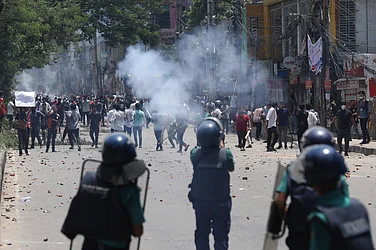Responding to an RTI request filed by Outlook, the Ministry of Labour and Employment has said that in the last three financial years, the government has rehabilitated only 2,728 bonded labourers under the Central Sector Scheme for Rehabilitation of Bonded Labourers, averaging approximately 900 per year. This shows that the average rate of rehabilitation of bonded labourers in the last three years has reduced by about 80% when compared to previously available data.
In 2016, the Ministry of Labour and Employment, in its response to a question in Rajya Sabha, had said that the government had rehabilitated 2,82,429 bonded labourers since 1978. In 2023, the reports of the Standing Committee on Labour, Textiles and Skill Development noted that, “A total no. of 3,15,302 bonded labourers have been released till date”. This means that from 2016-2023, the total number of people rescued and rehabilitated was just 32,873.
The average number of people rescued and rehabilitated per year in the 2016-23 period is around 4,696. This itself is much less than what is required to achieve the Central government’s target of abolishing bonded labour by 2030 through identifying, rescuing, and rehabilitating an estimated 1.84 crore bonded labourers. However, as the average in the last three years has come down to approximately 900 per year, achieving this seems even more unlikely.
Earlier this year, when Outlook went on the ground and spoke to stakeholders, it was found that there is a sense of denial in the administration regarding cases of bonded labour. A social worker who has been working for a long time on this issue, said, “While the district magistrate or the SDM is responsible for recognising them as bonded labourer, they don’t want to do it. In most cases, they don’t give them certificates of bonded labourers, depriving them of the basic rehabilitation facilities that they are entitled to”.
In 2021, the government notified the Central Sector Scheme for Rehabilitation of Bonded Labourer-2021, increasing the earlier rehabilitation amount, and adding provisions like a piece of land and a house for the family of the rehabilitated labourer. Currently, bonded labourers get a one-time help of Rs 30,000 from the government after their release.
Earlier, they would get Rs 20,000. Later, upon the conviction of the employer, they are entitled to get Rs 1 lakh for males, Rs two lakh for women and children and Rs 3 lakh in extreme cases of sexual trafficking and sexual bondage of women, children or transgenders. However, the conviction of the employer doesn’t happen immediately, leading to certain confusions. Sometimes they get bail and come back to threaten the rescued labourers, found Outlook.
Former Justice of Bombay HC Roshan S Dalvi, while addressing a national-level of consultation on human trafficking, said that though bail should be rule, in such cases the bail may adversely affect the process of justice. Justice Dalvi had, in one of her earlier judgments, even framed the guidelines on anticipatory bails in cases of human trafficking.
The bonded labour system was abolished in India through the Bonded Labour System Abolition Act, 1976. As per the Act, bonded labour is defined as “the system of forced, or partly forced, labour under which a debtor enters, or has, or is presumed to have, entered, into an agreement with the creditor to the effect that in consideration of ‘advance’, ‘customary obligation’, or any other form, “render, by himself or through any member of his family, or any person dependent on him, labour or service to the creditor, or for the benefit of the creditor, for a specified period or for an unspecified period, either without wages or for nominal wages.” However, the social menace continues even after 48 years of its formal abolition. Will the government be able to rehabilitate the existing bonded labour system within 2030, a time frame that they have set for themselves?




























